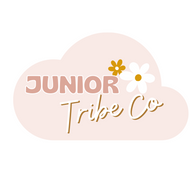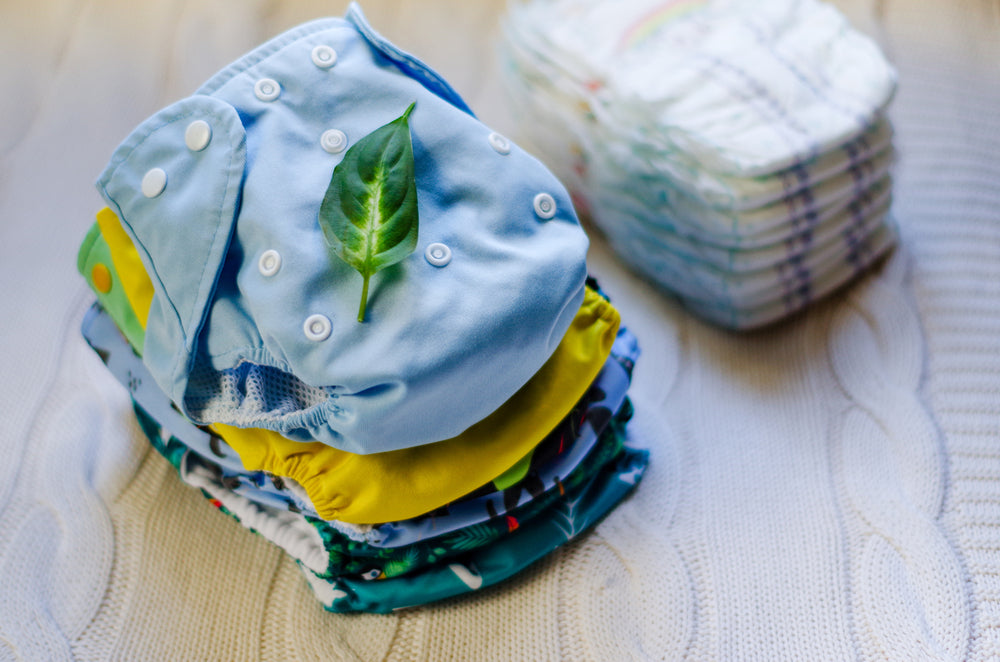Cloth or disposable nappies? That is the age-old question new parents are faced with. Both cloth and disposable nappies have their pros and cons, and although cloth nappies are growing in popularity, disposable ones are still popular with many Australian parents.
At the end of the day, the nappy you choose for your baby will come down to personal preference. What works well for one baby might not work for another.
Cloth Nappies
More cloth nappies are being used by parents due to a growing awareness of the negative impact disposable nappies have on the environment.
There are several different types of cloth nappies
- Cloth (Terry Squares): Made of Flannelette cotton, hemp, bamboo or a blend. Secured with pins or clips. Dry quickly. Cheapest of all cloth nappies.
- Pre-folds: Made of layers of cotton or bamboo which are folded and placed inside a leak-proof cover. Less absorbent than other types of cloth nappies.
- Fitted nappies (shaped nappies): Made of cotton, fleece, hemp or bamboo. Used with leak-proof cover. Fasten with velcro or press studs. More expensive than other types of cloth nappies.
- Pocket nappies: A leak-proof outer material sewn together with a soft inner layer. Inserts into the pocket between outer and inner material to absorb liquid.
- All-in-ones: A water-resistant outer layer sewn together with absorbent inner material. Fastened with velcro or clips. Easy to wash but slower to dry.
- All-in-twos (snap-in-ones): Leak proof outer material and absorbent snap-in layers which can be removed for washing.
Why Choose Cloth Nappies?
- Save Money Over Time: The cost per wear goes down every time cloth nappies are used and when they’re used for multiple children in the same household.
- Eco-Friendly: Cloth nappies are an eco-friendly option, as they are reusable and save on production costs and waste.
- Friendly Materials: Cloth nappies are made from natural, soft materials like bamboo, hemp and cotton which are more gentle on a baby’s skin.
- Less Shopping for Nappies: As cloth nappies are reusable, it means that it’s just one less thing for parents to add to their weekly grocery lists, saving both time and money.
- More Space: There’s no need to bulk buy cloth nappies which frees up some extra space in your home.
- Different Types and Designs: Cloth nappies come in different styles and cute designs, providing a wider range of options than disposable nappies.
Cons
- A Lot of Washing: Cloth nappies have to be washed every time they are soiled which means a lot of washing and a higher electricity and water bill.
- More Expensive Upfront: One cloth nappy can cost up to $35 making them more expensive than disposable nappies.
- More of a Hassle When Travelling: When you’re travelling with a baby who wears cloth nappies, you’ll need to carefully plan how many nappies you will have to pack, and find out whether you’ll have access to a washing machine.
- Sizing Uncertainty: Some cloth nappies come in a ‘one size fits all’ option or different sizes with velcro and clip fastenings making it harder to find the perfect size for your baby.
Disposable Nappies
Disposable nappies are made from a waterproof plastic outer layer, a soft lining and a layer of absorbent material in between.
Biodegradable disposable nappies are made from more eco-friendly materials like bamboo, cotton or a paper pulp. They decompose more quickly than regular disposable nappies when they’re thrown away. However, they’re still nowhere near as environmentally friendly as cloth nappies are.
Why Choose Disposable Nappies?- Convenience: The main reason why disposable nappies are still so widely used is because of their convenience. They’re easy to buy in bulk and dispose of when they’ve been used.
- Less Expensive Upfront: A box of nappies usually costs less than one cloth nappy does.
- Easier to Find the Right Size: There are lots of different brands and sizes of disposable nappies to choose from, making it easy to find the perfect size for your baby.
- Travelling: It’s easy to pack and dispose of disposable nappies when you’re travelling. If you run out, you can easily go to the nearest grocery store to pick up some more.
Cons
- Impact on the Environment: Millions of nappies end up in landfills every year and they take hundreds of years to completely decompose.
- Overall Cost: Disposable nappies might be cheaper in the short-term, but babies will go through thousands of nappies until they are potty trained, which can add up to thousands of dollars.
- Can be Irritable: Disposable nappies can contain chemicals which may irritate a baby’s skin and cause nappy rash.
- Take Up More Space: Storing boxes or large piles of disposable nappies will take up more space in the home.
Things to Consider
- Fit: Nappies need to be snug around a baby’s hips with no side gaps. If you’re thinking of buying cloth nappies, you may need to try a few different sizes to find the perfect fit for your baby, as sometimes a ‘one size fits all’ doesn’t always mean a perfect fit.
- Nappy Liners: If you’re using a cloth nappy, invest in some nappy liners, which make a cloth nappy more absorbent and makes change time a little less messy.
- Washing: Since you’ll be washing cloth nappies often, consider investing in some energy efficient appliances to save money and energy over time.
- Hand-Me-Downs: Store your cloth nappies to be reused for another baby. This will save hundreds of dollars in the long run.
- Less Absorbent: Cloth nappies can be less absorbent than disposable nappies, meaning that you may need to change your baby more often. Make sure you have enough nappies on hand while waiting for the soiled cloth nappies to be washed and dried.
- Switch it up: Some parents use cloth nappies during the day and switch to disposable nappies at night or when travelling. This ensures that you’re still helping the environment and saving money in the long-run but also has the added benefit of making nighttime changes and travelling more convenient.
- Added Costs: Parents who use cloth nappies may also want to invest in a wet bag for when they’re out and about, and a nappy bucket to put dirty nappies in. There are also the added costs of washing detergent and powder to wash the cloth nappies.
For more nappies related products, please visit here.

